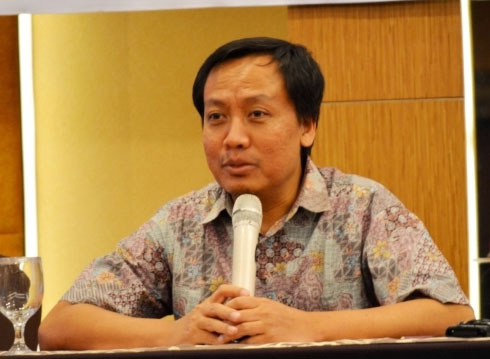
Lecturer of Faculty of Medicine UGM, dr. Retno Ekantini, Sp.M (K)., M.Kes., has developed semilunar implant for glaucoma drainage to reduce hydrostatic pressure that cause increased pressure in the eye of patient of glaucoma. It can reduce the pressure by 30 mmHg until normal level between 8,08-17,32 mmHg. The model is potential for further development.
The idea has sparked due to failure incidents in trabeculotomy for glaucoma patients. “The trabeculotomy failure is caused by fibrosis between conjunctiva and sclera in which there is influential factor to the formation of excess tissue due to diabetes mellitus, inflammation after surgery, iris neovascularisation, aphakia, and conjunctivitis,” said Retno in her doctoral promotion on Wednesday (31/8) at Faculty of Medicine UGM.
According to Retno, this is generally done by opthalmologists to reduce the hydrostatic pressure by doing filtration operation to reduce the intraocular pressure. “The most often conducted surgery is trabeculotomy, but in some cases no good prognosis is available if trabeculotomy is to be conducted in certain glaucoma patient,” she said.
In neovascular cases, glaucoma in aphakia, glaucoma uveitis and glaucoma with severe conjunctiva, installment of the implant is needed. But most implants that are available do not have valves whereas the semilunar is beneficial in shunt hydrocephalus implant. She considered the same model can function also for glaucoma drainage implant. Test is done using 5 semilunar implants that meet the criteria of inclusion and exclusion where leaks are not found in the valve. “Three of five implants can reach the lower fluid flow than the production of aqueous humour,” she said.
In her opinion, semilunar valves in silicon pipes can shut down depending on the force that works on the inner edge and the force in the outer edge. Retno said it is rather relieving that observation of all implants can reach hydrostatic pressure until the normal pressure.


